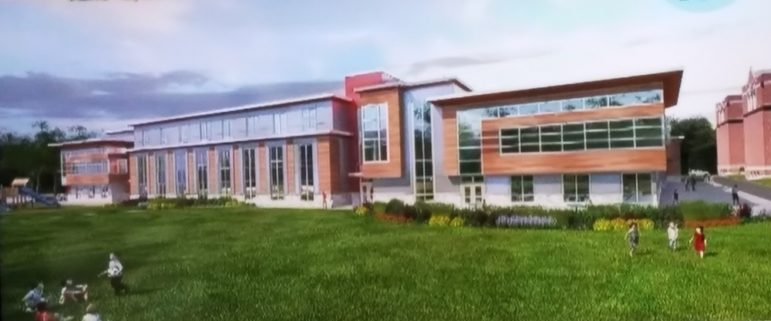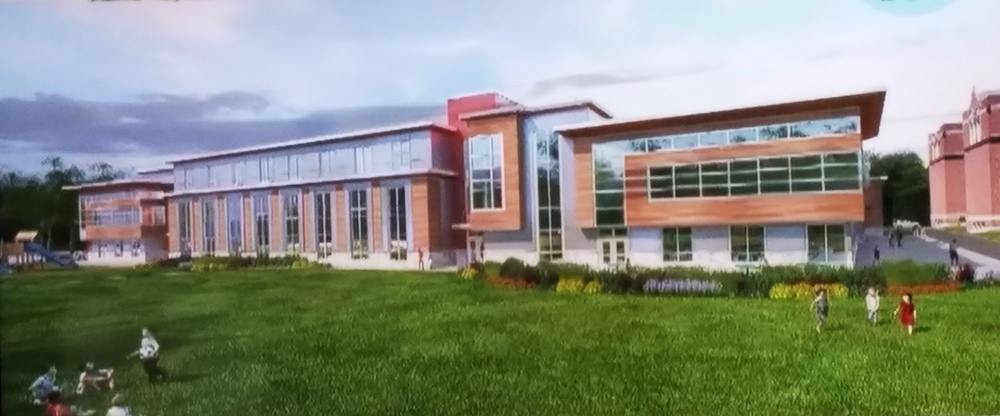
The School Building Committee affirmed its commitment to making Watertown’s new elementary schools energy efficient and built in sustainable ways.
The committee that is overseeing the school projects at Hosmer, Cunniff and Lowell elementary schools voted unanimously on June 19 to approve sustainability goals for the project. Architect Scott Dunlap from Ai3 also discussed some details of the design and ways they can be efficient and sustainable.
The Sustainability Subcommittee of the School Building Committee presented the proposed goal, which called for striving for Net Zero buildings and to reach LEED Gold standards for the sustainability of the projects at the two new school buildings (Cunniff and Hosmer), while efforts would be made to make the Lowell energy efficient and sustainable.
Assistant Town Manager Steve Magoon had concerns about the wording of the goal, particularly the part that said “everything would be done” to achieve the goal.
“It should not be do everything we can. That could compromise the educational program or spend a billion dollars,” Magoon said. “It should be everything within the confines and focus of the project.”
Others on the Building Committee agreed and the wording was altered.
Brian Hebeisen, a member of the Watertown Environment & Energy Efficiency Committee said he previously had some concerns, but thanked the Building Committee and the Sustainability Subcommittee for committing to the two standards.
“I am very pleased with what I’ve heard and very hopeful we can get where we want to go,” Hebeisen said.
Resident Ernesta Kraczkiewicz said she worried that the efficiency and sustainability goals would be sacrificed for financial reasons. She added that the state of Massachusetts may soon be moving to require these standards for projects such as new school construction.
Town Council President Mark Sideris, chair of the Building Committee, said he did not see that situation arising if the difference in cost is small. He noted the projects have changed a lot over a year and a half, going from three school renovations to two new schools and a third one being renovated. The budget went from a very preliminary estimate of $80-120 million to a more firm $170 million.
“I don’t think be in situation where need few extra thousand dollars to get Net Zero (and decide not to do so),” Sideris said. “We’ve come a long way and I think it is achievable.”
Net Zero means that the energy produced by the building is equal to or more than the amount of energy consumed on site. The main way to produce energy will be solar panels on the roofs of the new schools. Dunlap discussed the solar photo voltaic panel arrays that would cover most of the roofs at Hosmer and Cunniff. They would be substantial, and at least somewhat visible.
Exactly what they would look like, and how prominent, he said, has not yet been modeled. He added, however, that the panels would be lifted a few feet above the roof and angled to get the most sunlight to make them more efficient.
“If we felt like it was taking over, we would intervene,” Dunlap said. “If we think it is appropriately expressive of the building’s technology, and its innovation, but it is not leaning out as the one thing that sticks out (that is OK).”
Sustainability is measured by the LEED (Leadership in Energy and Environmental Design) standards. Dunlap said the goals look at not only how the building materials are produced, but how far they are shipped and the emissions created to transport them. Therefore, materials that are lighter and travel a shorter distance get a higher score. Other factors include how easily the products can be reused or recycled when it is removed.
The Sustainability Subcommittee discussed what level of LEED standard the projects could meet, said School Committee Chairman John Portz, who also chairs the Sustainability Subcommittee. The group did a preliminary LEED scorecard for the two new schools and found the current designs puts the new schools between Silver and Gold.
“There is a strong likelihood we would be able to achieve LEED Gold,” Portz said, adding that the architects will look for ways to improve the LEED score.
At Lowell, where the current building will be significantly renovated and additions will be made, Net Zero and LEED Gold levels are not possible, Portz said. Efforts will be made, however, to make the building energy efficient and to use sustainable methods and products.
There are costs to some of the LEED process, Portz said. To take the steps that would earn the points, and make the projects LEED Gold certifiable is one level that would not have an additional cost.
To have the architects go through the process of collecting all the information and the modeling that would be necessary to make the project LEED Certified would cost about $200,000, Portz said. The cost of doing the paperwork and actually becoming LEED certified would be an additional $33,000, he said.
